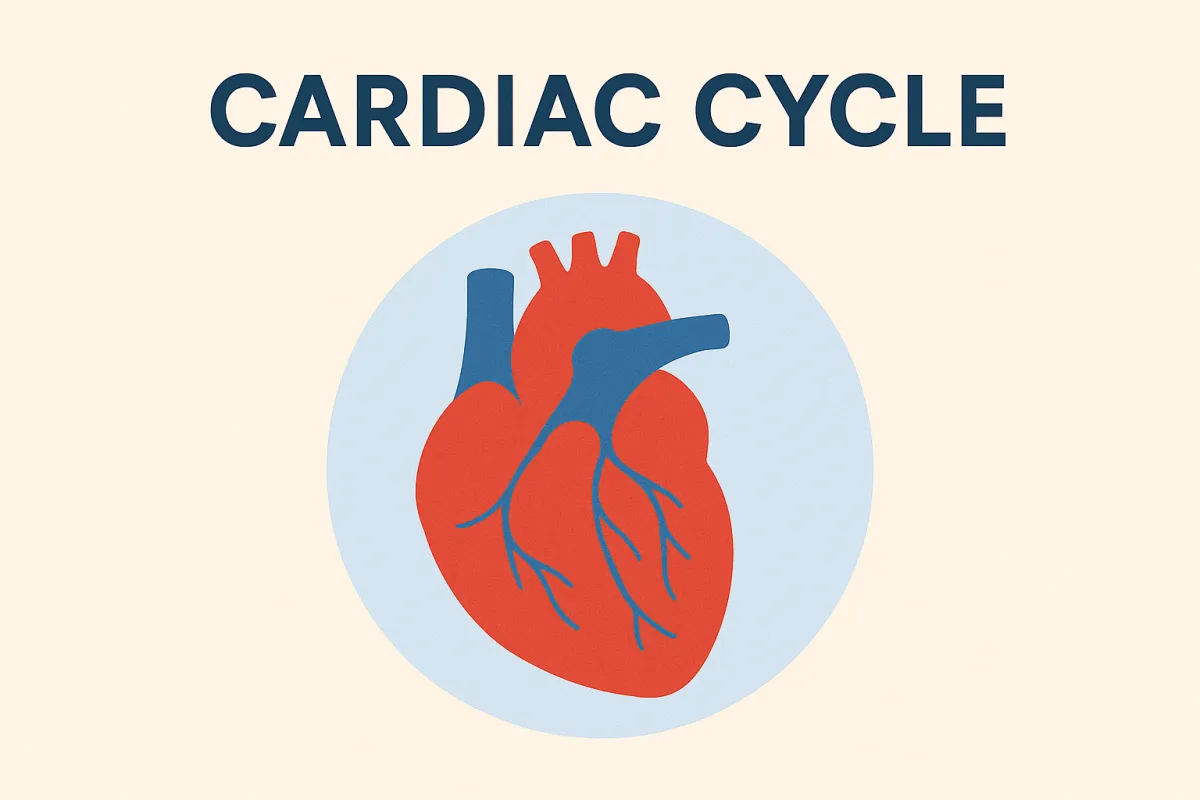
The Cardiac Cycle: Essential Knowledge for Nurses
Introduction
The human heart is an intricate pump that sustains life by circulating blood throughout the body. At the center of this process lies the cardiac cycle—a series of electrical and mechanical events that ensure adequate tissue perfusion. For nurses and advanced practice registered nurses (APRNs), a clear understanding of the cardiac cycle is fundamental in assessing patients, interpreting vital signs, and responding to cardiovascular emergencies.
At APRN WORLD, our mission is to provide clinically relevant, affordable, and visually engaging continuing education (CE) that empowers nurses to deliver evidence-based care. This article reviews the cardiac cycle in a way that is both practical and applicable to nursing practice.
What is the Cardiac Cycle?
The cardiac cycle refers to the sequence of events that occur from the beginning of one heartbeat to the start of the next. It involves alternating periods of systole (contraction) and diastole (relaxation). Nurses frequently encounter these phases when measuring blood pressure, interpreting heart sounds, or analyzing electrocardiograms (ECGs).
Phases of the Cardiac Cycle
1. Atrial Systole
The atria contract, pushing blood into the ventricles.
On auscultation, this contributes to the “atrial kick,” which is especially important in patients with stiff ventricles (e.g., left ventricular hypertrophy).
Nursing Insight: Loss of atrial systole (as seen in atrial fibrillation) can reduce cardiac output by up to 25%.
2. Isovolumetric Ventricular Contraction
Ventricles begin contracting, but valves remain closed.
Pressure builds without a change in volume.
Nursing Insight: This phase corresponds to the first heart sound (S1), when the AV valves close.
3. Ventricular Ejection (Systole)
Semilunar valves (aortic and pulmonic) open, and blood is ejected into circulation.
Nursing Insight: Nurses monitoring arterial lines can observe the rapid ejection phase as the steep upstroke of the waveform.
4. Isovolumetric Ventricular Relaxation
Ventricles relax, semilunar valves close, but AV valves remain shut.
This produces the second heart sound (S2).
Nursing Insight: Splitting of S2 can provide clues about pulmonary hypertension or right heart strain.
5. Ventricular Filling (Diastole)
AV valves open, allowing blood to flow passively into ventricles.
Can be divided into rapid filling and reduced filling phases.
Nursing Insight: The third heart sound (S3), if present, often indicates fluid overload or heart failure in adults.
The Cardiac Cycle and Nursing Practice
Understanding the cardiac cycle helps nurses:
Interpret ECGs: Linking P waves, QRS complexes, and T waves to atrial and ventricular events.
Assess Heart Sounds: Identifying murmurs, gallops, and abnormal rhythms.
Manage Hemodynamics: Interpreting blood pressure trends, jugular venous distension, and cardiac output monitoring.
Educate Patients: Explaining how conditions like atrial fibrillation, valvular disease, or heart failure disrupt the cycle.
Clinical Applications for Nurses
Blood Pressure Measurement: Nurses can correlate systolic pressure with ventricular ejection and diastolic pressure with ventricular filling.
Medication Administration: Drugs such as beta-blockers, calcium channel blockers, and diuretics directly influence different phases of the cardiac cycle.
Critical Care Nursing: In ICU settings, nurses use cardiac cycle knowledge to manage patients with intra-aortic balloon pumps, mechanical ventilation, and cardiac monitoring systems.
Continuing Education with APRN WORLD
At APRN WORLD, we recognize that cardiac physiology is foundational for clinical decision-making. That’s why we offer cardiology-focused CE courses designed for nurses and APRNs:
Interactive ECG interpretation modules
Visual guides on hemodynamic monitoring
Case-based learning scenarios in heart failure and arrhythmias
Our courses are cost-effective, evidence-based, and visually engaging, ensuring nurses can apply theory directly to patient care.
Conclusion
The cardiac cycle is more than a textbook concept—it’s the rhythm of life. For nurses, mastering its phases enhances clinical judgment, improves patient outcomes, and builds confidence in managing complex cardiac cases.
Explore APRN WORLD’s cardiology CE programs to strengthen your foundation in cardiac care and stay ahead in evidence-based nursing practice.










